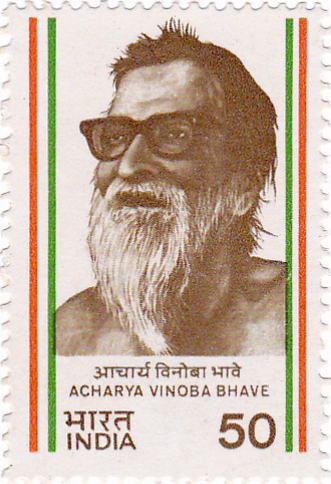
On 7 June 1916, a young man of twenty waited at the gates of Gandhi’s ashram at Kochrab in Ahmedabad for an interview with him. He had been drawn to the Mahatma on reading reports of his stirring speech at the foundation stone ceremony of the Benares Hindu University in February that same year.
Later given the name of Vinoba Bhave, Vinayak Narhari Bhave was a Chitpavan Brahmin from Maharashtra.
Gandhi had invited him to his Ashram for a detailed discussion. Their first meeting was in the kitchen where Gandhi was cleaning and cutting vegetables. He welcomed the newcomer warmly and offered him full membership of the Ashram.
The hard and austere life of the Ashram did not deter Vinoba. He participated quietly and painstakingly in all its activities. It was only when he was heard reciting verses from the Gita and Upanishads early one morning that the inmates of the ashram came to know of his profound knowledge of Sanskrit and religious scriptures.
Vinoba’s humility and self-effacing ways made him relatively unknown till 1940. An article by Gandhiji in the Harijan, his weekly paper, drew public attention to the man who was later to become his spiritual heir.
Gandhi described him as a man who “believes that silent constructive work with civil disobedience in the background is far more effective than the already crowded political platform.”
Later, it was his work for the improvement of villages that was to make Vinoba famous. His Bhoodan (land gift) movement that took him from village to village in an attempt to find a solution to the problem of unequal distribution of land, was started in Pochampally (better known for its sarees!) in Andhra Pradesh (now in Telangana).
This was in April 1951, when the land problem was so bad that it led to murders, fights and fires raging all around. On a padayatra while returning from Shivrampally, Vinoba camped at Pochampally. Here he held a prayer meeting attended by people from different walks of life.
When he referred to the land problem, one of the Harijans said, “We work on the land with the sweat of our brow, but we have no land.”
Vinoba asked them how much land they required. They quickly calculated: 80 acres.
He, in turn, appealed to the conscience of the audience. Was there any among them generous enough? After a minute’s silence, one gentleman, Ramachandra Reddy, got up and offered not eighty but hundred acres.
That’s how the Bhoodan movement commenced.
Rita Roy. From: www.gandhiashramsevagram.org
Did you know?
The Nizam of Hyderabad, HEH Mir Osman Ali Khan, donated a whopping 14,000 acres of his personal land to the Bhoodan movement for re-distribution among the landless.
Other big landlords like Raja Bahadur Giriwar Narayan Singh and Raja of Ranka (Garhwa Jharkhand) combinedly donated 1,02,001 acres of land to the Bhoodan initiative, which became the highest acreage of land given by landlords or estate-owners in India.
